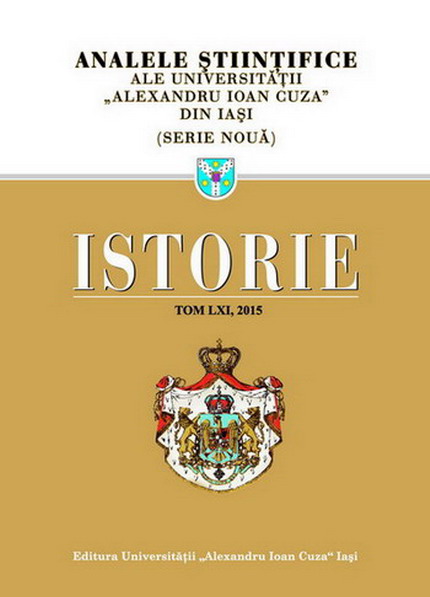„Arestuitele ţigănci” de la Iaşi şi implicaţiile colective ale unui furt la drumul mare din 1830
The “arrested female Gypsies” of Iaşi and the collective implications of an 1830 highway robbery
Author(s): Laurenţiu RădvanSubject(s): History, Cultural history, Local History / Microhistory, Social history, 19th Century
Published by: Editura Universităţii »Alexandru Ioan Cuza« din Iaşi
Keywords: Moldavia; Gypsies; mass arrest; Russian authorities; robbery.
Summary/Abstract: This study concerns an event that occurred in the troubled years following the Russo-Turkish war of 1828–1829, when Moldavia was under Russian military occupation and administration. In the spring of 1830, while travelling on the main road connecting Focşani to Bacău (in the south of Moldavia), a Russian second lieutenant named Cozmin was attacked by a group of Gypsy thieves, robbed and injured. This seemingly minor event was exacerbated significantly and it eventually involved a great number of people: entire families of Gypsy slaves (robi), representatives of local and central authorities, but also simple townspeople. The Russian commander of Focşani decided to take into custody not only the suspects, but the entire group of Gypsies who had allegedly sheltered them (this group comprised 78 men, women, old people, and children). They were detained at Focşani for two months and then moved to Iaşi, where men were separated from women and children. The first were sent to a military court that set them free after more than two years, due to lack of sufficient evidence. Women and children were held at the periphery of Iaşi and moved from one house to another: they fell ill and did not have enough food and wood for winter, which caused the death of ca. 23% of the persons detained. Those who survived were set free after more than one year of house arrest. This study analyzes the ordeal and abuses endured by these people and the chaotic decisions made by authorities in a period of crisis and transition. The most likely motivation of Russian authorities for this mass arrest was to set an example, considering the alarming level of robberies recorded during that period. The study also identifies the members of the Gypsy group, their owners, and the representatives of authorities involved in the affair.
Journal: Analele Ştiinţifice ale Universităţii »Alexandru Ioan Cuza« din Iaşi. Istorie
- Issue Year: 2015
- Issue No: 61
- Page Range: 229-247
- Page Count: 19
- Language: Romanian
- Content File-PDF

